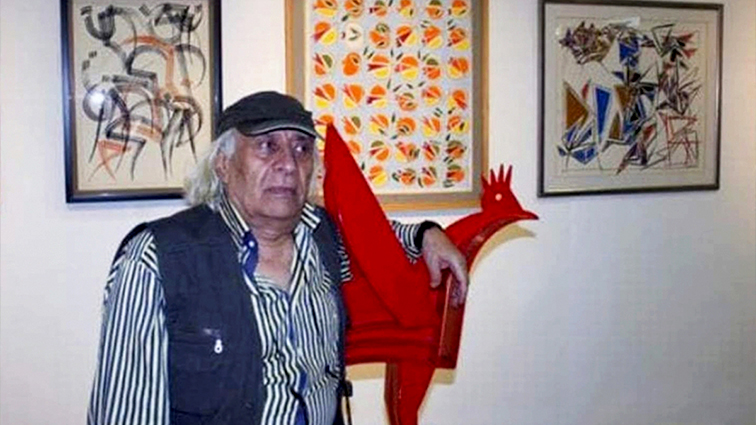Hussein Madi, one of the most prominent visual artists in the Middle East, passed away on Thursday at the age of 85. Madi was known for his distinctive geometric approach in his artistic works, relying on triangles, circles and other shapes. The veteran artist lived for decades in Rome, until he said in a previous interview that Italy “refined his art,” but he also did not miss Beirut. The Minister of Culture in the Lebanese caretaker government, Muhammad Wissam Al-Murtada, mourned the late visual artist.
Lebanon bid farewell to Hussein Madi, one of the most prominent visual artists in the Middle East, who passed away on Thursday at the age of 85.
Madi died at his home in Beirut, after a busy artistic life that he spent, especially between Lebanon and Italy, during which he mixed painting and philosophy, and lived through different artistic trends.
Madi, who is called the “Picasso of the East,” was known for his distinctive geometric approach in his artistic works, relying on triangles, circles and other shapes that produce creative work that bears a special imprint.
The Minister of Culture in the Lebanese caretaker government, Muhammad Wissam Al-Murtada, mourned the late visual artist, and said that his brush “is like a rainbow, as it is the emotion of color with the ripples of nature.”
Al-Murtada continued: “As for his paintings, each one of them is two opposite mirrors of himself and the earth, reflecting moments of harmony between man and his surroundings. They are the pinnacle of the creative state that renews existence.”
He added: “Now I fell from the painting lost, and Hussein Madi went on a wooden plank to Shebaa, the land he loved, and depicted heroism there in the form of flowers, trees, and a river, deepening the affiliation of art to the cause of freedom.”
